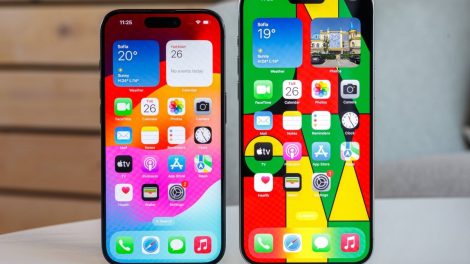Gurman – Foldable iPhone coming 2026 at the earliest is a headline that has captured the attention of technology enthusiasts and market watchers alike. The prediction, made by Mark Gurman, a renowned technology journalist and industry analyst, sheds light on Apple’s potential plans to enter the foldable smartphone market. This revelation comes amidst increasing competition and innovation in the mobile technology sector, where foldable devices are seen as the next frontier. According to Gurman, Apple may introduce its first foldable iPhone by 2026, but the timeline underscores the company’s cautious approach to entering this niche, prioritizing refinement and user experience over being first to market.

The concept of a foldable iPhone has been a topic of speculation for years. Many rival companies, including Samsung, Huawei, and Oppo, have already launched foldable devices, pushing the boundaries of mobile innovation. However, Apple has historically taken a measured approach to adopting new technologies, often waiting until the company can implement them in a way that meets its high standards of quality and functionality. Gurman’s report highlights this trend, suggesting that Apple’s delayed entry into the foldable segment reflects the company’s strategy of ensuring its product is not just competitive but also superior in terms of design, durability, and usability.
For years, the foldable smartphone market has been defined by challenges related to durability, hinge mechanisms, and software optimization. Early foldable devices faced criticism for fragile screens and issues with longevity. Apple’s extended timeline indicates that it is likely focusing on addressing these problems before releasing its product. Industry insiders believe that Apple’s foldable iPhone will not merely follow the designs of its competitors but will introduce new innovations that set it apart. For instance, Apple could leverage its expertise in materials science, such as its Ceramic Shield technology, to create a more robust folding display.
The idea of a foldable iPhone also raises questions about how Apple plans to integrate its software ecosystem with a new form factor. Apple’s iOS is known for its seamless user experience, and adapting this operating system to accommodate a foldable design could be a significant undertaking. Competitors have struggled to optimize software for foldable devices, often resulting in glitches or inconsistent experiences. If Apple is indeed targeting 2026 or later for the release of its foldable iPhone, it is likely investing considerable resources in developing software solutions that fully utilize the capabilities of a folding screen, such as multitasking features, optimized app interfaces, and seamless transitions between folded and unfolded states.
The delayed introduction of a foldable iPhone may also have implications for Apple’s hardware ecosystem. The company has built a reputation for creating devices that work harmoniously, from iPhones and iPads to Macs and wearables. A foldable iPhone could potentially redefine the way Apple devices interact, introducing new possibilities for productivity and entertainment. For example, a foldable iPhone might serve as a hybrid device that bridges the gap between smartphones and tablets, offering a larger screen for creative tasks, gaming, or video editing while maintaining the portability of a phone.
Another aspect worth considering is how the foldable iPhone will fit into Apple’s pricing strategy. Foldable smartphones are generally more expensive than traditional models due to the advanced technology required for their construction. Apple’s devices are already positioned at the premium end of the market, and the introduction of a foldable iPhone could push prices even higher. This raises questions about consumer demand and market segmentation. Will the foldable iPhone be targeted at a niche audience, or will Apple aim to make it accessible to a broader range of users over time? The answer to this question will likely depend on the company’s ability to reduce manufacturing costs and improve yield rates for foldable displays.
The potential release of a foldable iPhone in 2026 or later also has implications for Apple’s competition. Samsung, as a market leader in foldable smartphones, has a significant head start with its Galaxy Z series. The company has been refining its foldable technology over multiple generations, addressing durability issues and expanding its market share. By the time Apple enters the foldable market, Samsung and other competitors may have established a strong foothold, making it challenging for Apple to differentiate its product. However, Apple’s loyal customer base and reputation for innovation could give it an advantage, even as a late entrant.
From a broader industry perspective, the introduction of a foldable iPhone could signal a turning point in the adoption of foldable devices. Apple has a history of legitimizing new technologies, as seen with the launch of the iPhone, iPad, and Apple Watch. If the foldable iPhone is successful, it could accelerate the adoption of foldable smartphones across the industry, encouraging more manufacturers to invest in this form factor. Additionally, Apple’s entry into the foldable market could drive advancements in related technologies, such as flexible displays, hinge mechanisms, and battery solutions.
The prospect of a foldable iPhone also aligns with Apple’s ongoing efforts to innovate in other areas of technology. The company has been exploring advanced display technologies, such as microLED, which could play a role in the development of foldable screens. Furthermore, Apple’s work on augmented reality (AR) and virtual reality (VR) devices could intersect with its plans for a foldable iPhone, creating synergies between different product lines. For example, a foldable iPhone could serve as a versatile platform for AR applications, offering a larger screen for immersive experiences while maintaining the portability of a smartphone.
The timeline suggested by Gurman—2026 at the earliest—indicates that Apple is not rushing to compete in the foldable market. Instead, the company appears to be taking a long-term view, focusing on delivering a product that meets its high standards of quality and functionality. This approach reflects Apple’s broader strategy of prioritizing user experience over market trends. While this cautious approach may result in a delayed entry, it also increases the likelihood that the foldable iPhone will make a significant impact when it is finally released.
As you follow the developments surrounding Apple’s foldable iPhone, it becomes clear that this product represents more than just a new device. It is a reflection of the evolving smartphone market, the challenges of innovation, and the enduring influence of Apple as a technology leader. Whether the foldable iPhone lives up to the expectations set by Gurman’s report remains to be seen, but its potential to reshape the industry is undeniable.










Add Comment